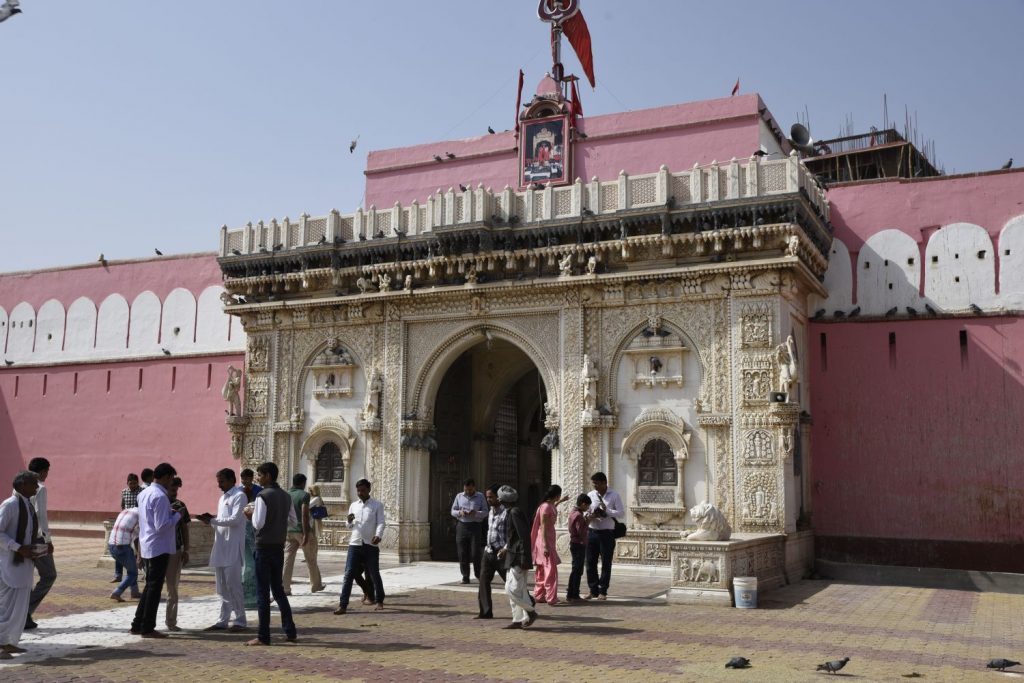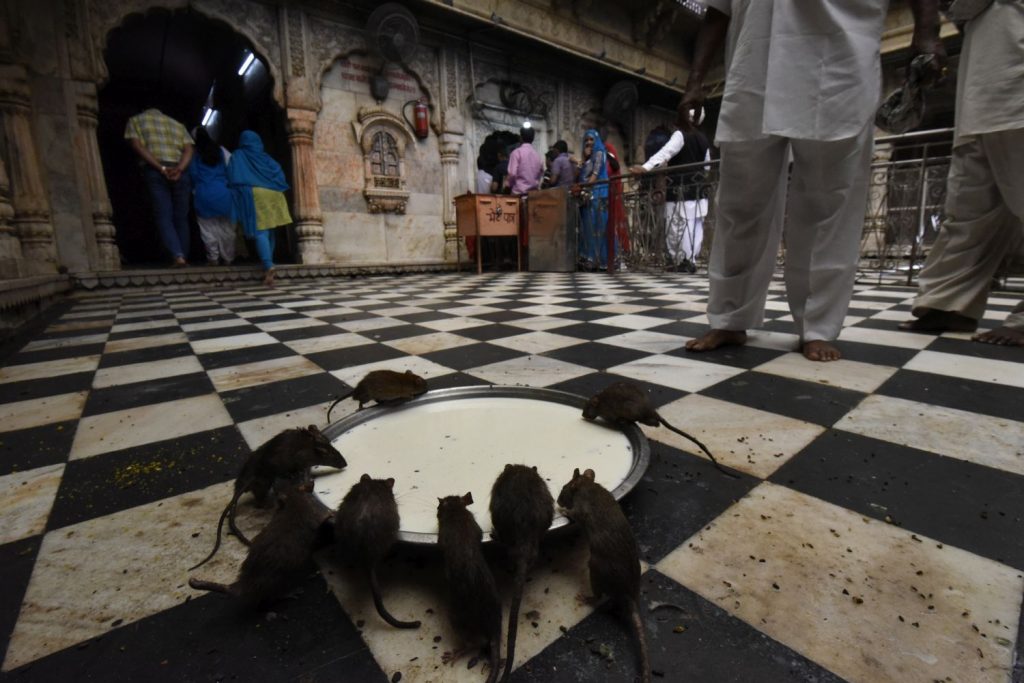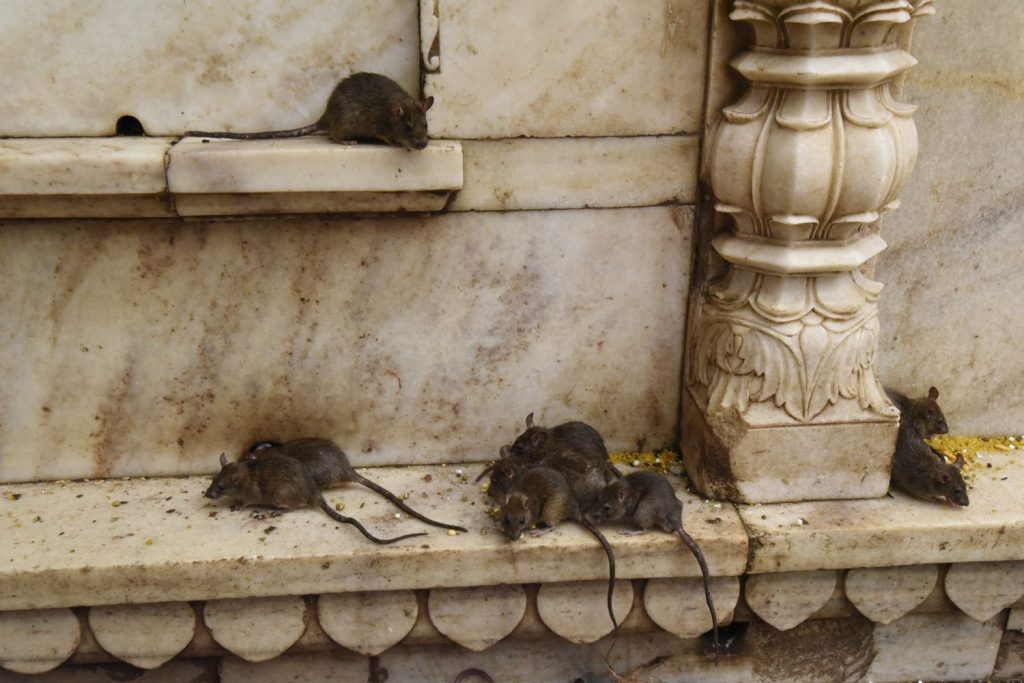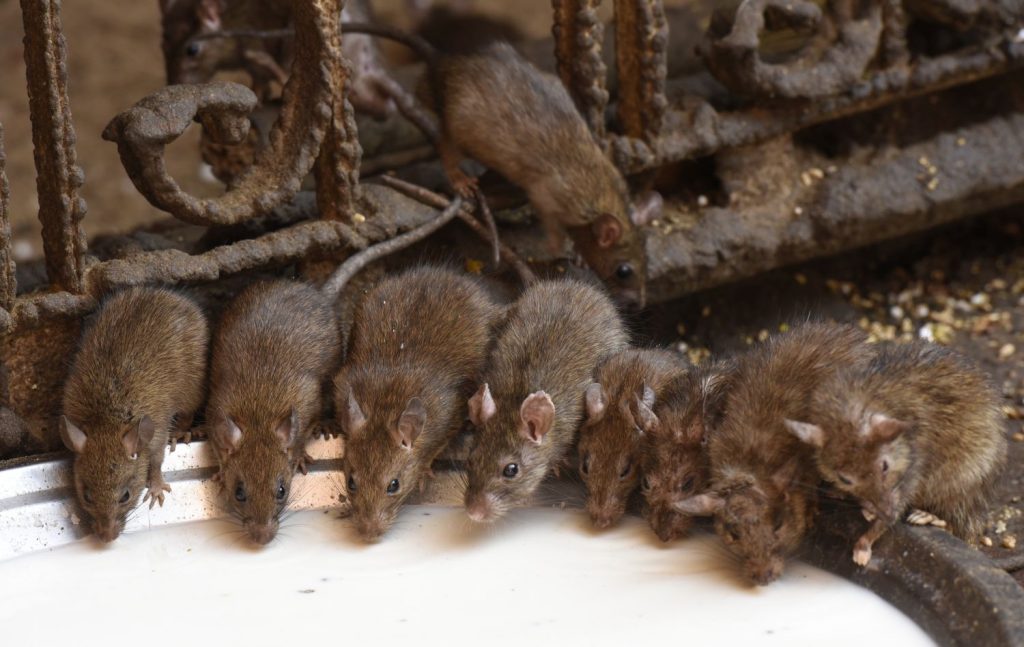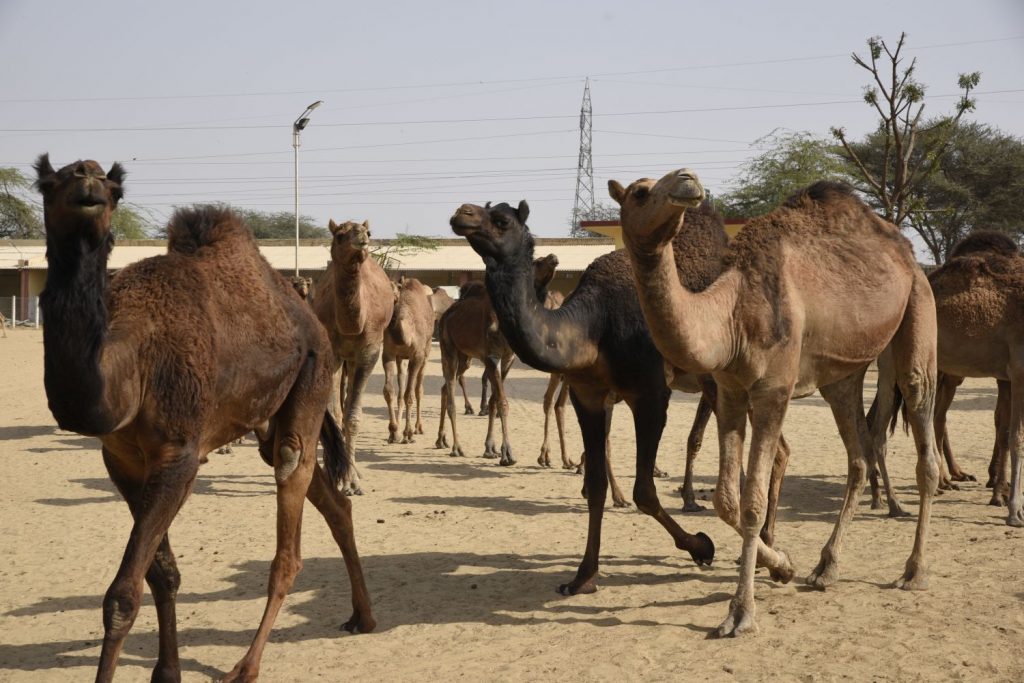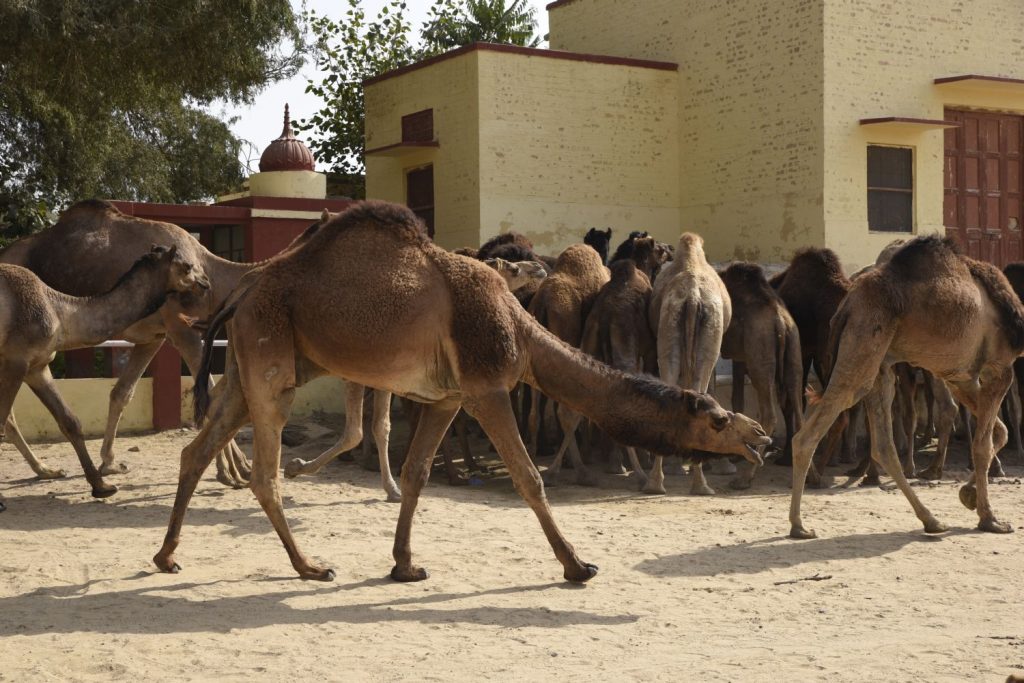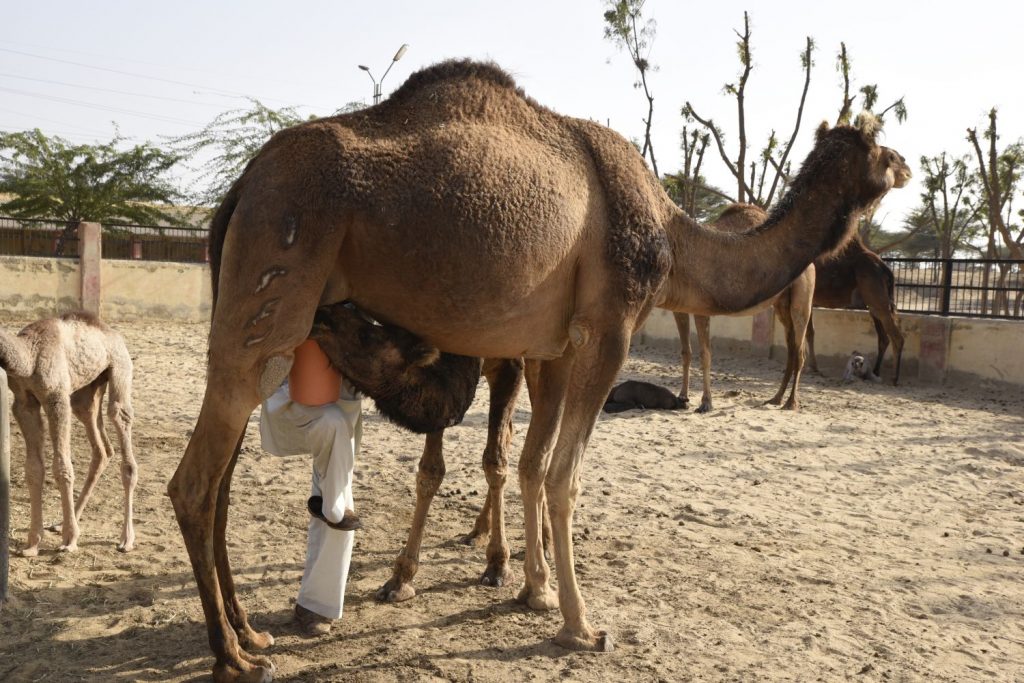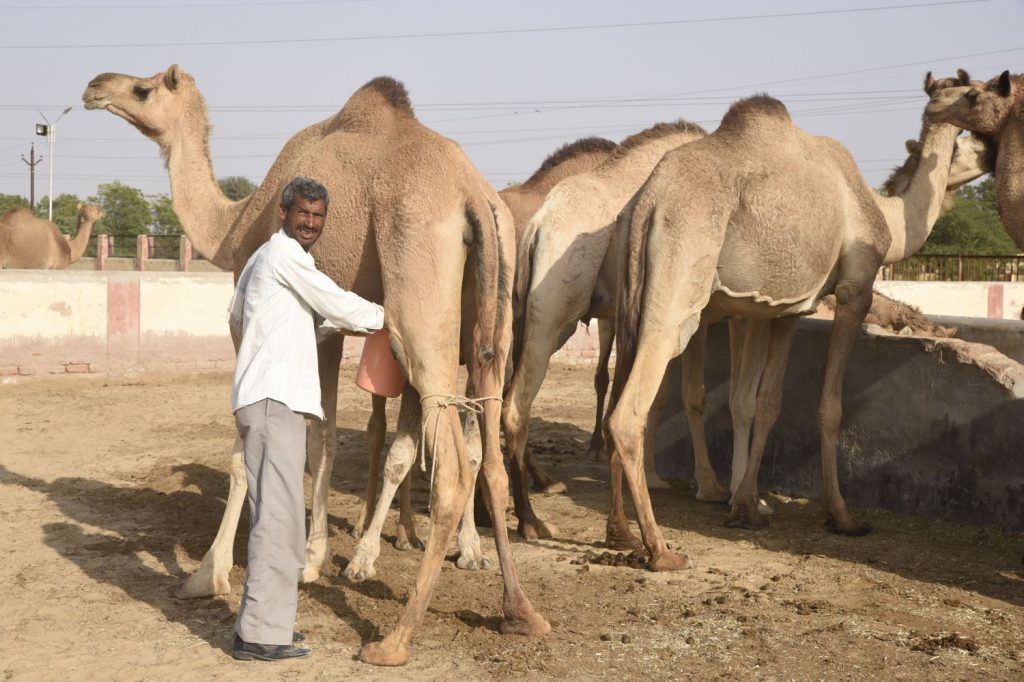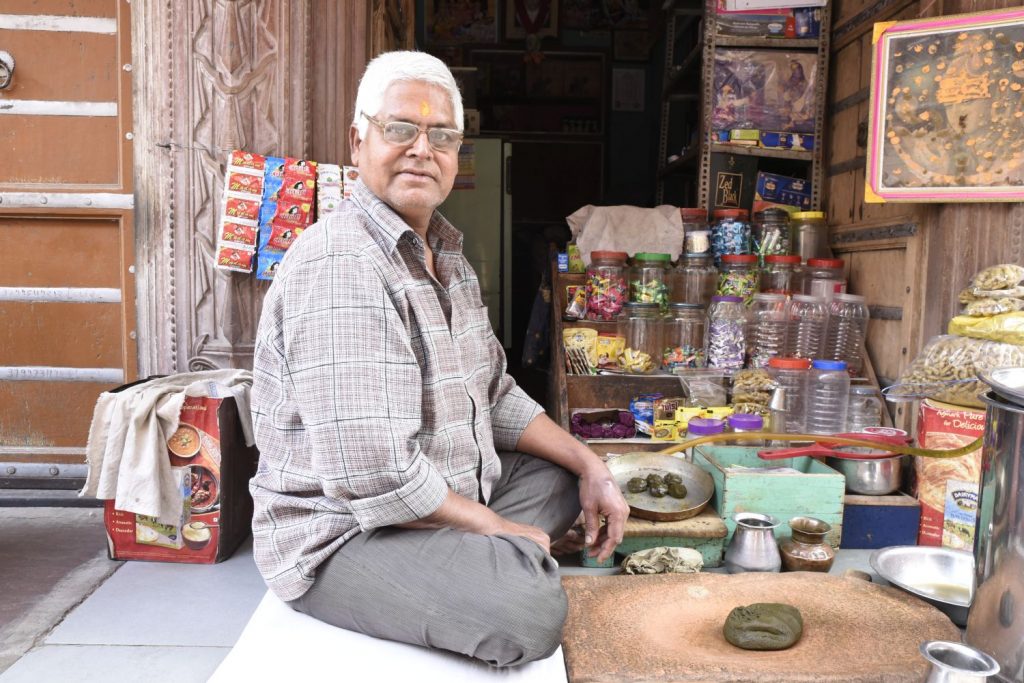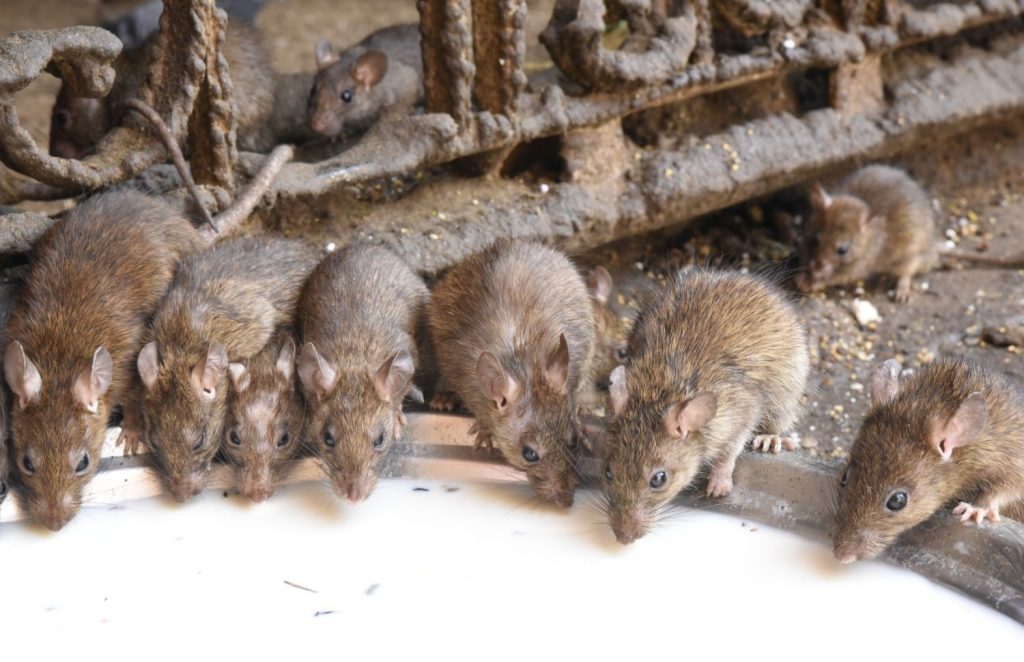
Rats scurried across the temple floor and ducked in and out of little crannies, hollows and holes.
The Karni Mata Temple in Deshnok, south of Bikaner, Rajasthan, looked fairly ordinary from the outside, but as soon as you walked through the entrance, you passed a little cranny swarming with rats.
In the main courtyard, a musician beat on a drum. To the right, rats climbed up an iron grille while pigeons fluttered around. At a large bowl, about the size of a big wok, filled with milk, rats perched side-by-side slurping up the milk. Some even hung upside down to find a space to drink from, their snouts submerged.
A dead rat covered in milk lay to the side, ignored by the other rats. Perhaps it fell in and drowned.
Some devotees visiting the temple gave food to the rats that scurried away in fear at first, but when they realized it was food they went after it, grabbing the food from each other.
These rats are venerated by the worshippers. According to local belief, the rats are the reincarnated ancestors of local residents. People there don’t go through the normal process of death and reincarnation. Rather, people become rats and rats when they die become people.
Worshippers lined up to go into the inner sanctum for blessing, though I did not see any rats or rat figures in there. There was, however, another bowl just outside, with more rats sipping milk and with rat feces all around.
Like any other Hindu temple, people must remove their shoes before they come inside, so devotees were walking barefoot through rat feces and bits of chewed and congealed rat food.
It’s apparently auspicious to eat the food the rats have nibbled on, but I didn’t try it.
I was prepared to go barefoot for this once-in-a-lifetime experience, but was grateful I didn’t have to. Instead of just leaving my shoes lying outside the temple as many Indians do, I played it safe and took them to a shoe check stand. There they gave me some open-topped cloth slippers that at least covered the bottoms of my feet. I normally don’t try to accept special treatment, but in this case I was happy to make an exception.
My first full day in Bikaner was an animal themed day – rats in the morning and camels in the afternoon. Before talking about the afternoon visit to the National Research Centre on Camels, I should mention the previous day’s drive from Jaisalmer.
As planned, Ajay, who was driving a Bengali family to Delhi, stopped near our hotel shortly after the agreed time, and there were two seats for Yogesh and me.
In the beginning, the road was good, being well maintained for the military. As we went along however, the traffic became heavier. We were constantly passing very slow farm vehicles and trucks, with lots of oncoming traffic that was also doing the same. And because the road was relatively good, our speed was higher than normal for India – around 80-90 km/h. Often people were passing right when there were other vehicles coming and the vehicles just squeezed over making three lanes on the two-lane road.
Yogesh said he wasn’t scared. This is normal for Indian driving. But at times I was terrified. I had to just have faith that Ajay was an experienced driver and knew what he was doing. The rules of the road are certainly different in India!
Back to the camel research centre. I got an auto rickshaw that was on the verge of breaking down and we drove the 10 km south of town mostly in the same gear. The rickshaw did give up the ghost just as we arrived, but the driver had it working again in about 20 minutes. I was early for the 2 p.m. opening, so chatted with a couple of Indian psychology professors, one of whom especially spoke good English.
He filled me in on some of the recent Indian political developments that I was aware of, but didn’t fully understand.
I knew that Narendra Modi of the BJP had become India’s Prime Minister last year and so far he seems to have maintained considerable support, especially among Hindus.
I also knew that elections took place in Delhi just after I arrived. Apparently an upstart party, the AAP, beat the BJP, and this was seen as a rebuke, at least by people in Delhi to some of the BJP’s more extreme Hindu nationalist policies, such as discussions of bringing Muslims “home again” by reconverting them to Hinduism.
This professor said he was a Hindu, but not very religious. He had to keep up religious appearances, however, because of social pressure.
Governments, he said, should govern rather than worry themselves with religious agendas. I told him that in general terms, I certainly agreed, though I didn’t get into discussing the religious agenda of Canadian Conservatives.
The government-run camel research centre conducts research on camel breeding and tries to maintain and improve camel genetics. People can bring female camels there to be bred for free. They also research other aspects of camels such as disease prevention and development of camel dairy products, and products made from the hair, as well as skin and bones of camels that have died of natural causes. They don’t slaughter camels or develop markets for their meat.
I shared a guide with an Irish couple. He showed us the camel studs, the nursing mothers, the museum and other aspects of the operation.
The tour ended just as the camels were due for their 3 p.m. feeding, which I wanted to see. It was quite a sight as hundreds of camels were brought in from the fields and they lined up at water troughs to drink. I was warned to stay back a respectable distance as it’s camel rutting season and the males can get aggressive. They made roaring sounds somewhat like a lion, which also showed they deserved respect.
They were also brought to another area for food more filling than the scrub that they forage in the desert.
Apparently camels are capable of drinking a couple hundred litres of water in a few minutes. They can also go a couple weeks without drinking.
Just as I was winding up my watching of the feeding and was getting set to leave, my phone rang and it was Yogesh. He was just arriving at the camel research centre with a few officials from the post office who were being given a tour by a senior official from the research centre. They invited me to join them, so I got the tour again, and also got VIP access to a few areas that are off limits to the general public. In particular we were brought into the coral with the nursing mothers to watch the camels being milked. They wanted me to take a few photos they can use in their publication, which I agreed to.
Today I met a local young man who speaks good English and works when he can as a guide, though says it’s hard to get this work because Bikaner is not a major tourist destination like some of the other cities of Rajasthan.
As my train to Jaipur doesn’t leave until 11 p.m. this evening, I agreed to let him show me the old town and the fort. The bazaars in the old town were quiet as it was the last Sunday of the month, the one day they close, but there was still a lot of activity. And there were some beautiful havelis built by Bikaner’s merchants over the centuries, with the typical balconies and stone lattices.
The fort was also impressive in its interior, although it is the one fort that was built on low ground with a moat rather than on a cliff, so its setting wasn’t as dramatic.
My guide said he had been a history student at the local university. Whether or not that is true, he had a good grasp of the city’s history and the displays at the fort.
My guide also took me to an art collective that does miniature paintings as well as to a collective selling bedspreads and quilts made in the villages. I am not really interested in doing shopping, though some of the miniature paintings were very impressive. I liked the ones that were copies of traditional Mughal miniatures, but some of the ones I liked were priced around 25,000 rupees or about $500, so it was easy to say “no.”
One of the artists showed me the technique of painting the tiny details using a very fine brush. If you look with a magnifying glass, you can see individual hairs on the small figures and other details. He even demonstrated doing a small painting on my thumbnail, writing my name in tiny microscopic letters.
My train is due to leave in about an hour. I have a three-tier bunk sleeper, so hopefully I can get a bit of sleep during the five plus hours trip to Jaipur. I want to be rested enough to enjoy that interesting, but touristy city.
